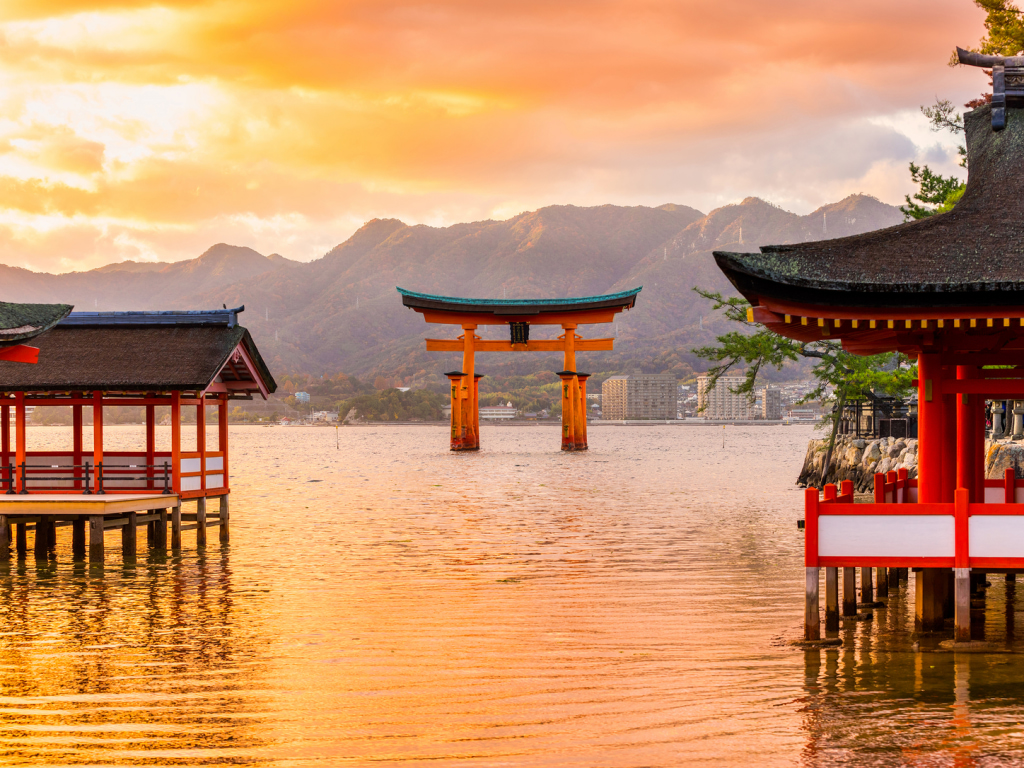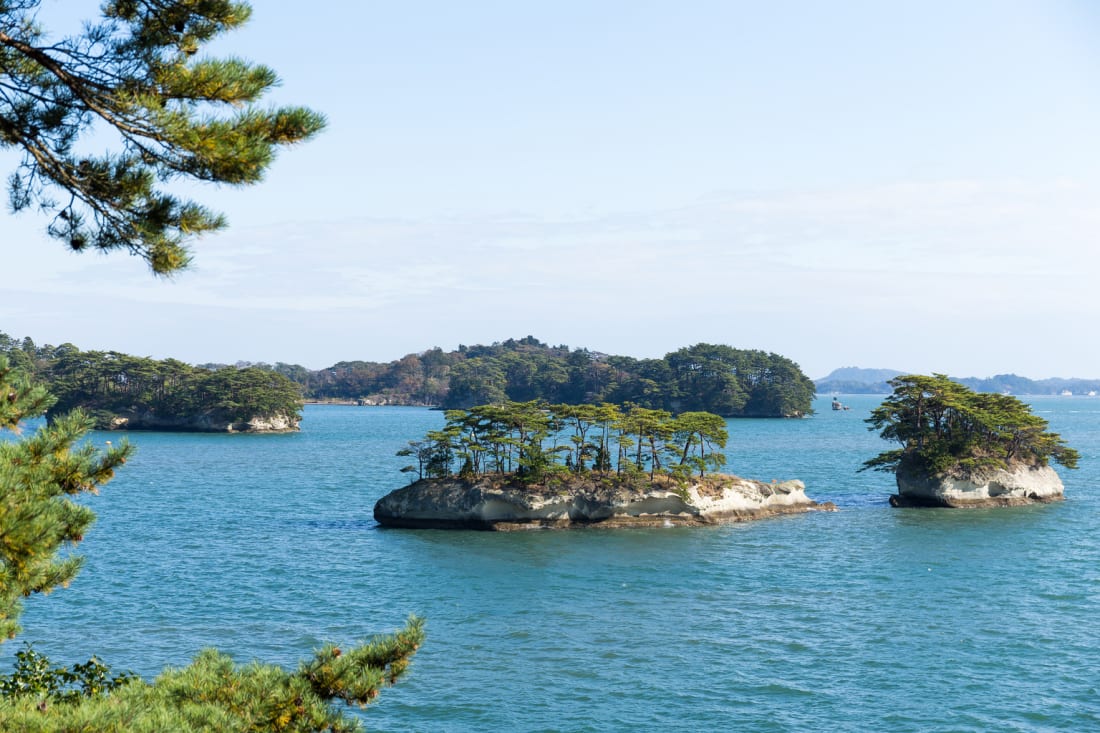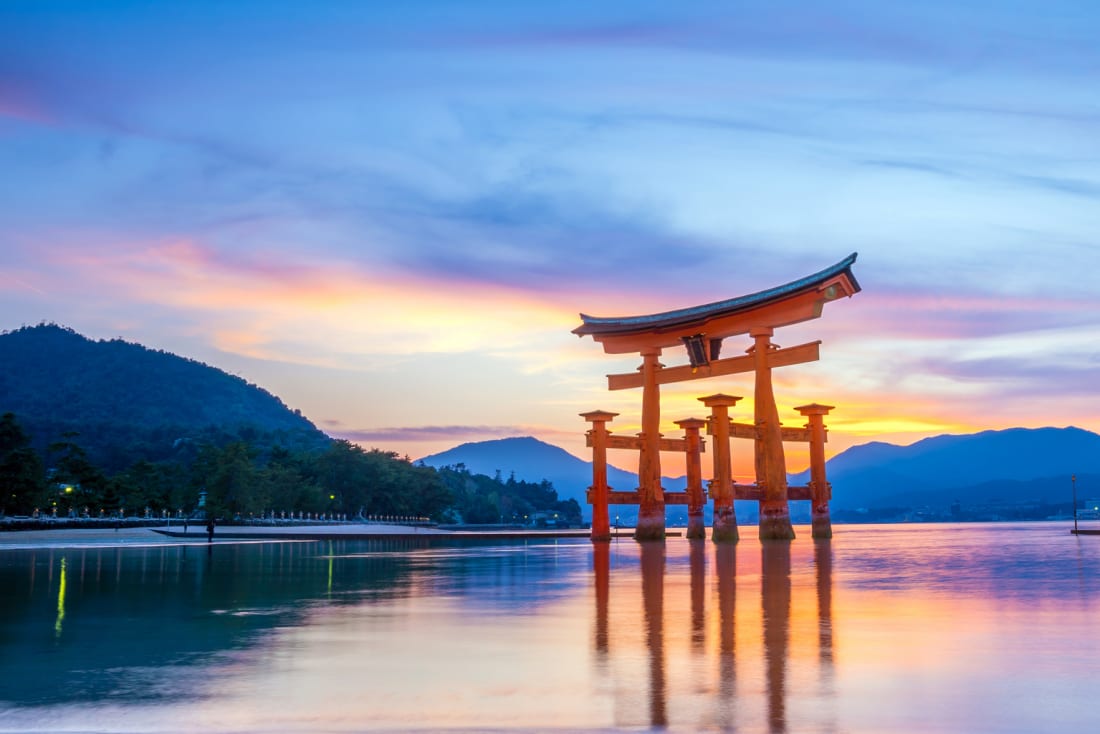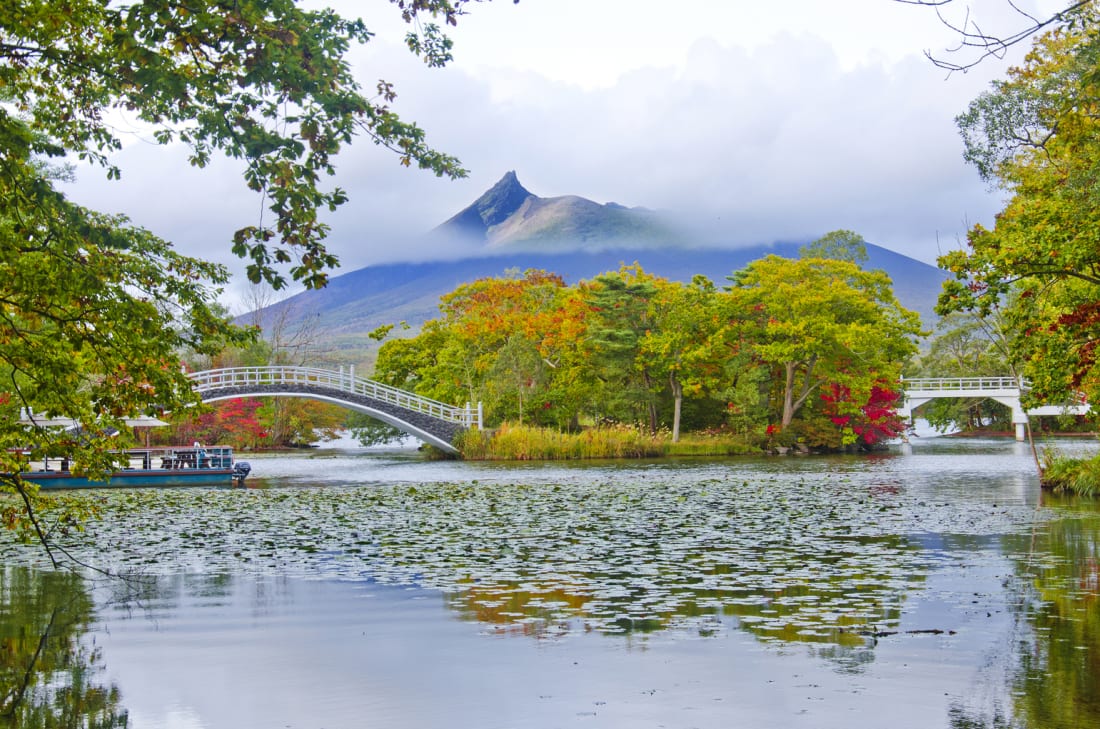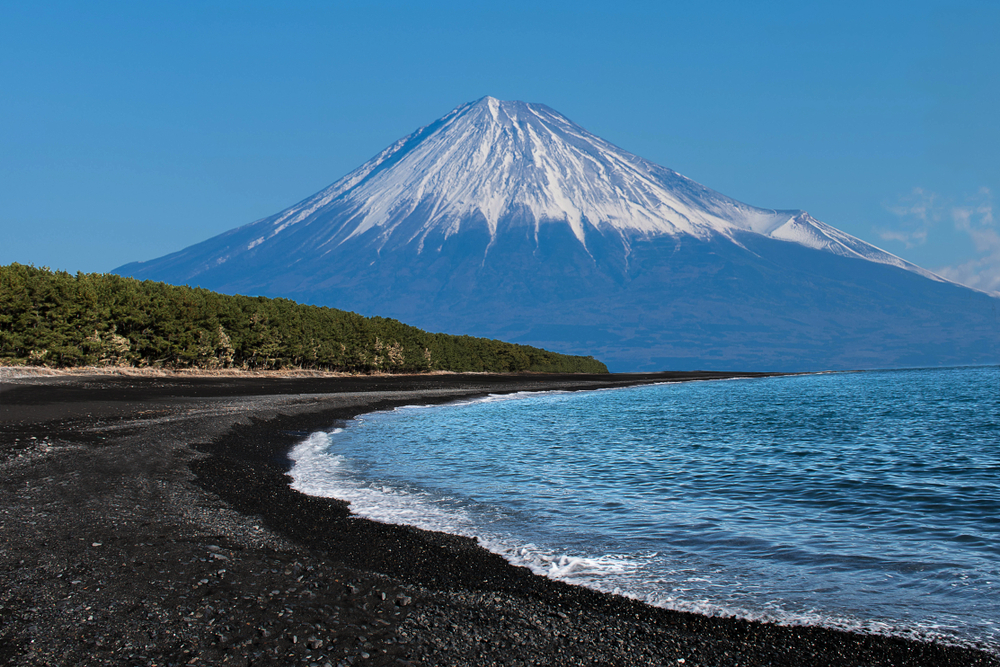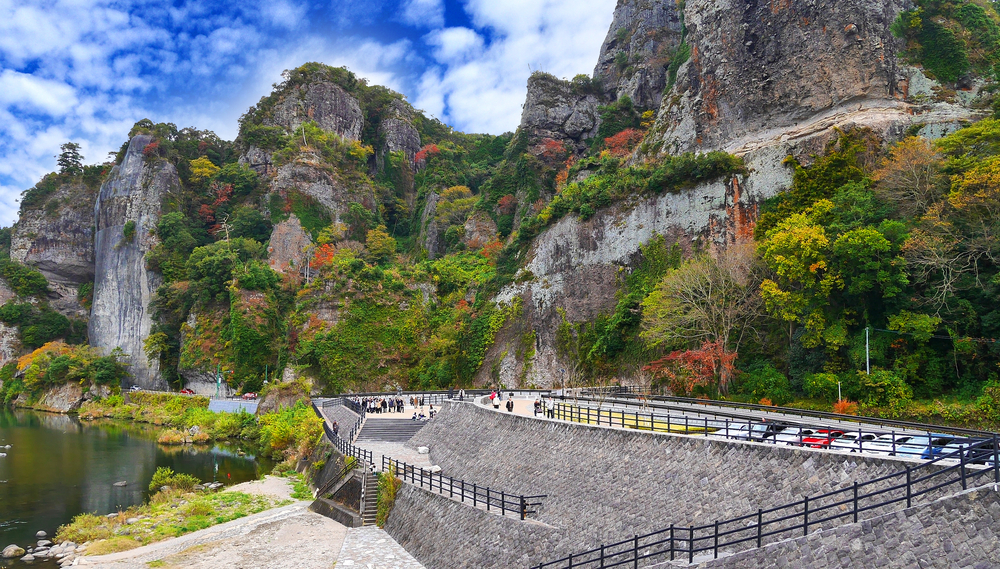Beauty might be subjective, but in Japan they’ve had that entire thing figured out since 1643, at least in regards to landscapes. That’s when the scholar Gaho Hayashi identified the three most scenic views in all of Japan, known as Nihon Sankei, and he got it so right that the entire country just went along with his choices for the next few centuries. But then, in 1915, the Jitsugyo no Nihon Sha publishing company came up with the Shin Nihon Sankei, or the New Three Views of Japan, which similarly were also just kind of accepted into the national consciousness. So now, whenever Japanese people want to experience the true beauty of nature, they actually get their pick of the six following picturesque locations.
THE OLD
Matsushima
Located in Miyagi Prefecture, Matsushima is a group of about 260 small islands in northern Honshu. Dotting the waters of Matsushima Bay, the isles are covered in verdant pine trees (known in Japanese as matsu, hence the name), which create an otherworldly landscape that, when viewed from a distance, looks like a mesmerizing floating forest. It’s easy to see why the entire atoll group has fascinated artists for centuries.
Many different cruises of the bay islets are available on site.
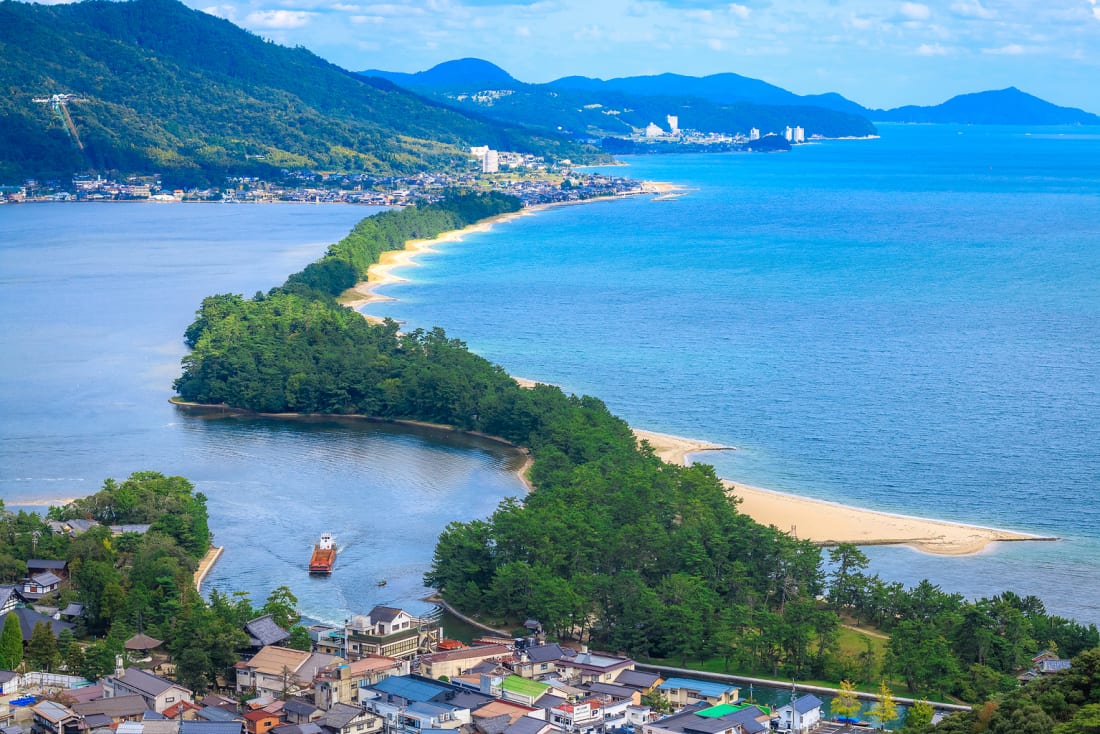
Amanohashidate
Amanohashidate, meaning “heavenly bridge,” is a sandbar in northern Kyoto Prefecture connecting two sides of Miyazu Bay. It’s a relatively thin strip of land, although it measures 3.3km in length and is covered by 8,000 pine trees. The lush green of the sandbar is a sight like no other, making it look like a forest coming to life and stretching itself over two miles of open water like some kind of plant bridge. Besides the pines, Amanohashidate is also home to the Isoshimizu fresh water well, voted one of the best springs in the entire country.
The beach along the heavenly bridge is open to the public, so if you ever find yourself in the area, walk it and see for yourself why this area has been deemed one of the most beautiful places in Japan.
Itsukushima Shrine
The Itsukushima Shrine in Hiroshima Prefecture is a UNESCO World Heritage Site that contains some of Japan’s National Treasures and the last of the classic Three Views of Japan: its famed torii gate. About 16m high and dating back to the mid-19thcentury, the gate is accessible by foot during low tide but appears to be floating mysteriously in water during high tide, creating one of the most celebrated and photographed scenes in the entire country.
THE NEW
Onuma
Onuma is a large pond found in the Onuma Quasi-National Park in southwest Hokkaido. Bordering the west slope of the Hokkaido Komagatake, an active volcano, Onuma is quite a spectacular sight with the blue waters of the pond seemingly melting together with the sky above it. Together with the majesty of Komagatake in the background, the entire landscape resembles something out of a dream painted with unbelievably vibrant colors.
Miho no Matsubara
The Miho Pine Grove in Shizuoka is a 7km-long stretch of pine trees alongside the Miho Peninsula shore. In 2013, the groves were actually added to the World Heritage List, and you can see why. It’s not just about the trees. It’s everything surrounding them, including the black volcanic rock sands and smooth rocks lining the beach between the pines and the water, the calm panorama of the bay, and some of the best views of Mount Fuji you’ll get in all of Japan. Put them all together, and you end up with something truly unforgettable.
Yabakei
The Kyushu prefecture of Oita might be mainly known for its hot springs, but it’s also home to one of the New Three Views of Japan: the spectacular Yabakei valley. A beautiful orchestra of jagged rocks, cliffs, and plant life, Yabakei really comes to life during the autumn. As all the leaves on the Yabakei trees turn yellow and red, it almost looks like the entire valley is on fire. A fall stroll should be on everyone’s bucket list.

